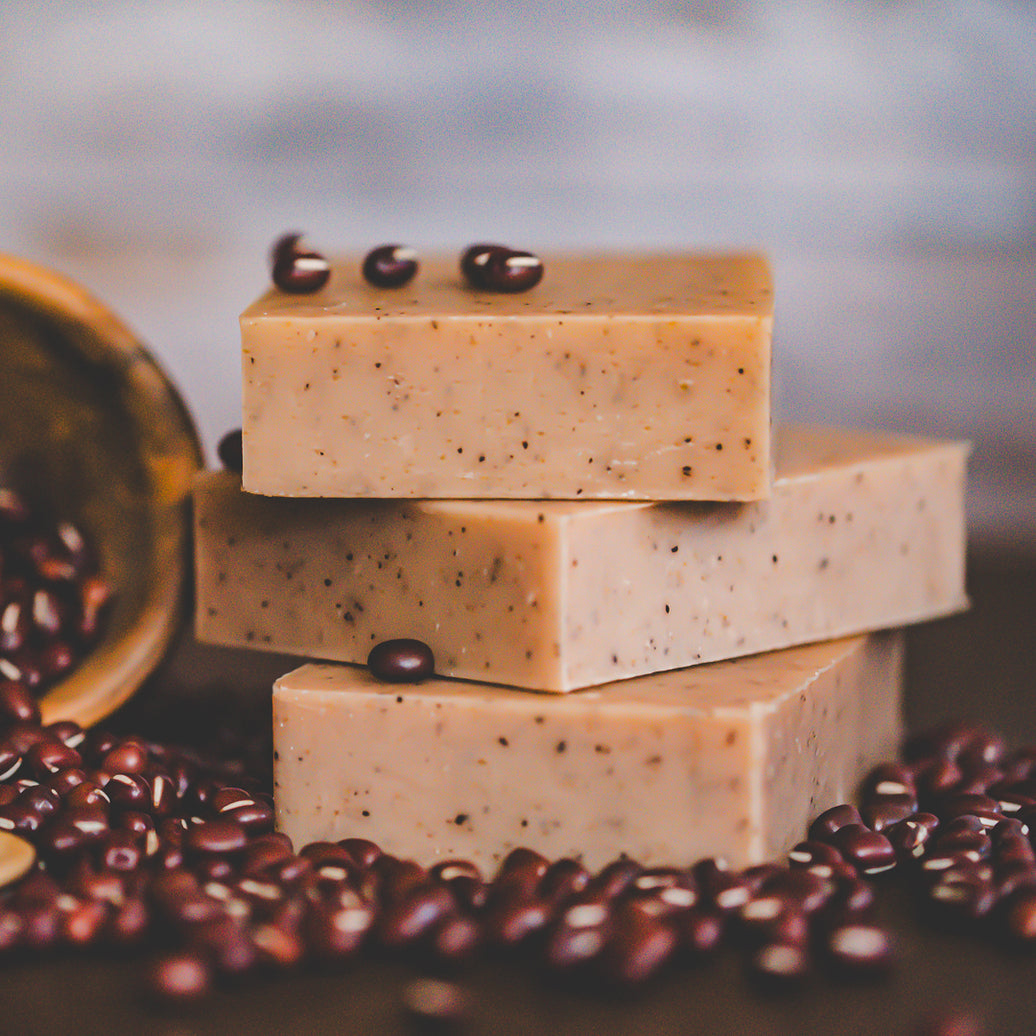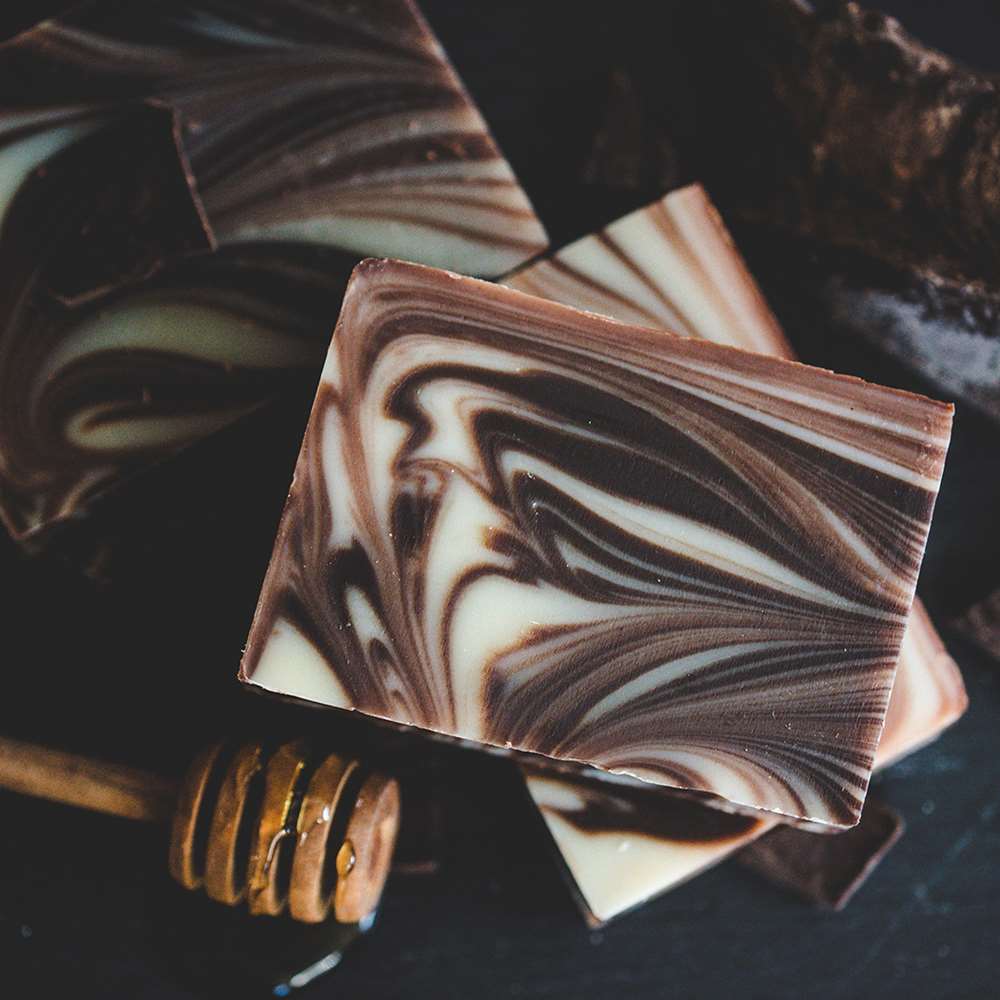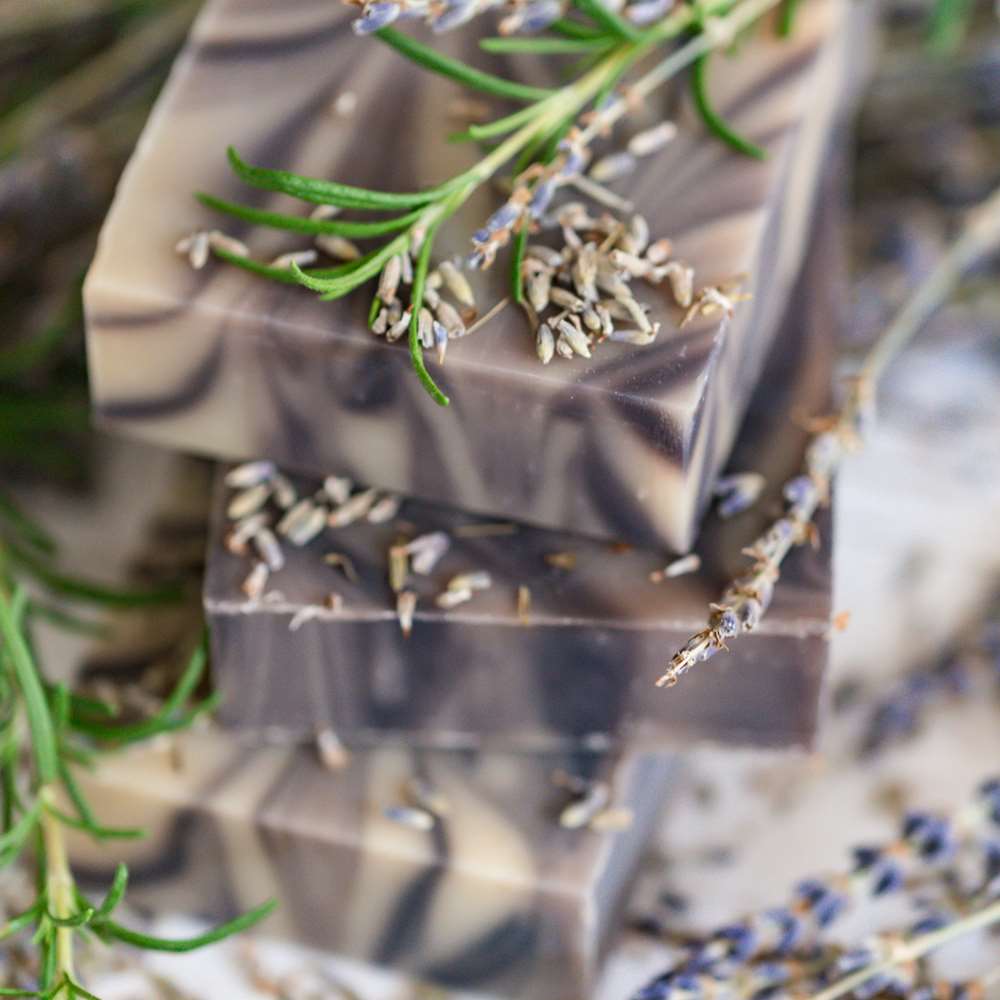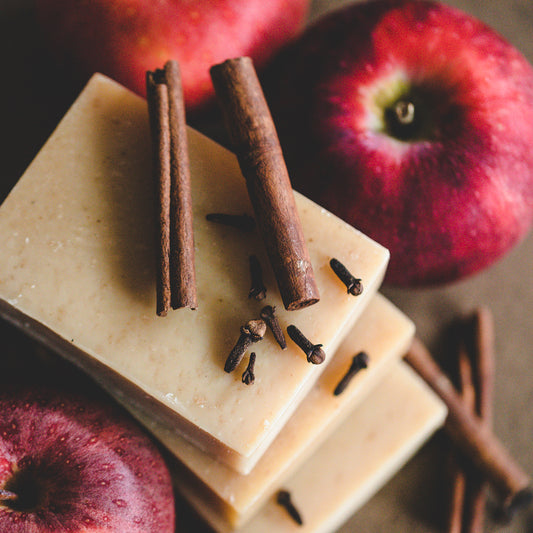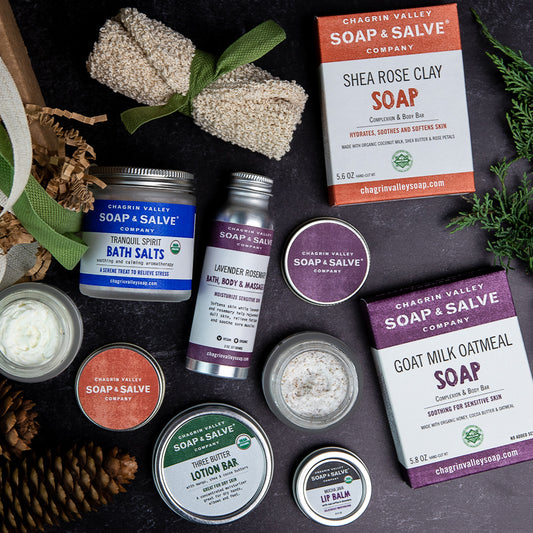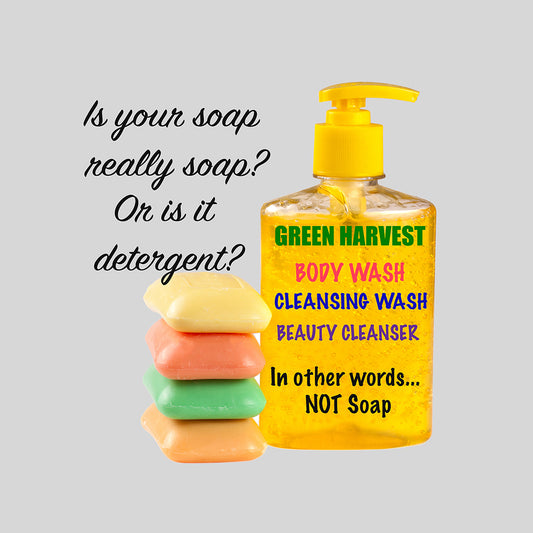The True Cost of Commercial Soap
The price you pay per bar may be less, but is that bar of commercial"soap" really cheaper in the long run than a bar of natural soap?
 Some consumers may be put off by the cost of a bar of natural handmade soap.
Some consumers may be put off by the cost of a bar of natural handmade soap.
You probably look the bar of natural soap and wonder why it costs more. I mean, soap is soap, right? Both bars clean your skin, right?
While I may agree that both bars clean the skin, the similarity goes no further.
Handmade soap, like most handmade things, tends to be more expensive than mass-produced, commercial soap. The ingredients used are natural and more expensive, batches are smaller, and the shelf life is shorter.
Simply put, commercial soaps contain synthetic ingredients that are very cheap to produce in a lab. Instead of using detergents like sodium lauryl sulphate, handmade soaps use natural cold-pressed oils and plant-based ingredients to nourish your skin.
Technically most commercial "soap" is not really soap. (More about that later)
So commercial "soap" is less expensive, more colorful, has fun, long-lasting scents and is cheaper—sounds like a great deal—right?
While it’s true that you are going to pay more for a bar of natural soap, commercial soaps can actually cost you more…and in more ways than just money.
Monetary Cost
Let’s start with the most obvious comparison--money. To make my case, I’ll need to use my chemistry background (I was a science teacher before making soap in my kitchen became more than just a side job), so bear with me.
Handmade Soap Retains All of the Natural Glycerin
As you can see in the saponification reaction (soapmaking process) glycerin is a natural by-product of soap-making.

Glycerin, a humectant and a fantastic moisturizer for your skin, is actually more valuable commercially than the soap itself. So, commercial soap companies extract the glycerin and sell it separately or use it in other products. Removing the glycerin also helps increase the shelf-life so commercial bar soaps can remain shelf-stable for years. Natural handmade soaps retain all of the natural moisturizing glycerin.
Extracting the natural glycerin means that commercial soap dries out your skin. Now you must purchase extra moisturizing creams and lotions to fix the dry skin created by the bar of commercial soap!
And what do companies put in those creams and lotions to make them moisturizing? The glycerin that was removed from the soap!
Learn More Blog: The Chemistry of Natural Soap Making
Handmade Soap is Superfatted
 Commercial soaps do not superfat their soaps. Superfatting is the process of adding extra fats (oils or butters) when formulating a soap recipe.
Commercial soaps do not superfat their soaps. Superfatting is the process of adding extra fats (oils or butters) when formulating a soap recipe.
Superfatting leaves a portion of unincorporated oils in the finished soap and as a result superfatted soaps have superior moisturizing and emollient qualities.
Commercial soap companies do not want extra oils—it decreases shelf-life. Without these extra oils to moisturize your skin naturally, you must once again reach for that bottle of lotion!
So although one small bar of commercial soap may cost less, what happens to the cost once you add in the price the extra cream and lotion needed to replace the natural skin moisture removed by commercial soaps?
One more factor -- if you use a liquid body wash, there is another factor to consider. What is the first ingredient listed on the label? It is water. The main ingredients for a solid bar of natural soap are skin-nourishing oils and butters. Properly cured soap has very little water remaining, meaning you really get what you pay for.
Environmental Cost
 Commercial soap is not really soap. It is a detergent made out of chemical hardeners, synthetic fragrances and colors, preservatives, and chemical foaming agents.
Commercial soap is not really soap. It is a detergent made out of chemical hardeners, synthetic fragrances and colors, preservatives, and chemical foaming agents.
As we take a bath or shower with commercial "soap" bars or body washes, we coat our skin with synthetic compounds like fragrances, dyes, preservatives, and detergents.
Now imagine the millions of people who use commercial soap each day.
All of these chemicals, many of which do not naturally break down, have to go somewhere. They wash down our drains into our septic fields, water systems or water treatment facilities. Some studies have shown that the chemicals used in detergent-based soap bars and liquid soap require more wastewater treatment than those used in bar soap.
Researchers have found that these chemicals often end up in our water systems and accumulate in our ecosystems. These chemicals affect wildlife--from fish to birds and natural foliage to flowers.
Natural soaps are biodegradable. At Chagrin Valley our soaps are made with organic ingredients. Organic ingredients mean organic farming and organic farming is better for the environment. It improves the quality of our environment by protecting our land and groundwater from contamination and by promoting the use of sustainable resources and the conservation of soil and water.
It is interesting that a product we use to keep our bodies clean may be damaging our environment. I am not sure how we put a price tag on that.
Health Cost
 I’d like to think that you can’t put a price on health, but when it comes to skin diseases, The Society for Investigative Dermatology and The American Academy of Dermatology Association already did.
I’d like to think that you can’t put a price on health, but when it comes to skin diseases, The Society for Investigative Dermatology and The American Academy of Dermatology Association already did.
According to the 2013 American Academy of Dermatology released a national burden of skin disease report, which stated that the cost of medical expenses and lost production from skin diseases is estimated to be more than $75 billion per year! That’s a huge number that is not doing anything to help our insurance premiums or our quality of life.
Now of course I am not saying that every skin disease is related to the use of commercial soap.
However, we do know that many of the synthetic ingredients and chemical preservatives added to create lather, colors, scent and years of shelf-life are known to be skin irritants. By using a synthetic detergent (syndet) bar of soap you are exposing yourself to a host of ingredients that are totally unnecessary and may cause skin irritation.
What is the cost of a trip to the dermatologist and the prescription cream to help clear the irritation?
So, what do you get with a cheaper bar of commercial soap – a product that will get you clean, but at what cost?
Just a few years ago, consumers may have considered a bar of natural soap a luxury. For today’s educated consumer, I don’t believe that is true anymore.
Check out Chagrin Valley Natural Organic Soaps!
Are you considering making the switch to natural soap?
Have you already made the switch? Let us know in the comments section below.

Find the Perfect Natural Soap for You
How We Make Soap At Chagrin Valley
Is There Lye In Natural Soap? Won't It Harm My Skin?
How Does Natural Soap Create Lather?
12 Reasons To Use Natural Soap
